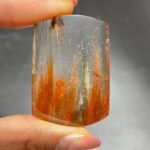Introduction
Quartz, the second most abundant mineral on Earth, holds immense commercial and technological value. Its unique properties make it indispensable in a wide array of industries, from electronics to construction to healthcare. This article delves into the multifaceted worth of quartz, exploring its economic significance, innovative applications, and future potential.

Quartz Demand and Market Value
According to the United States Geological Survey (USGS), global quartz production reached an estimated 210 million metric tons in 2022, with a market value of approximately $2.5 billion. China, Brazil, and the United States are the leading producers, accounting for over 60% of the world’s supply.
The demand for quartz is driven by its versatility and wide-ranging applications. It is primarily used in the manufacture of glass, electronics, and building materials. Other uses include ceramics, abrasives, gemstones, and laser optics.
Economic Impact of Quartz
The quartz industry plays a significant role in economic development globally. It creates jobs, supports infrastructure, and contributes to GDP growth. In countries like Brazil and China, quartz mining and processing operations generate substantial revenue and employment opportunities.
For example, in Brazil, the quartz sector employed over 26,000 people in 2021 and contributed an estimated $500 million to the country’s GDP. In the United States, the quartz industry supports over 12,000 jobs and generates annual revenue of around $1 billion.
Quartz Properties and Applications
Quartz possesses a unique combination of properties that make it valuable across multiple industries.
Composition and Structure
Quartz is composed of silicon and oxygen atoms arranged in a crystalline lattice. This structure gives it exceptional hardness, durability, and low thermal expansion.
Electrical Properties
Quartz has excellent electrical properties, including low electrical conductivity and high resistance to heat and voltage. This makes it ideal for use in electrical components, such as resonators, capacitors, and insulators.
Optical Properties
Quartz is highly transparent to both visible and ultraviolet light. Its ability to transmit light with minimal distortion makes it suitable for optical applications, including lenses, windows, and fiber optics.
Applications of Quartz
The versatile properties of quartz enable its use in a multitude of applications.
Construction and Infrastructure
Quartz is widely used in construction and infrastructure projects due to its strength and durability. Quartz aggregates are used in road construction, while quartz tiles are commonly used in flooring, countertops, and backsplashes.
Glass Manufacturing
Quartz is the primary ingredient in the production of glass. Its high silicon content and resistance to heat and chemicals make it an ideal material for making various types of glass, including flat glass, containers, and fiberglass.
Electronics
Quartz is essential in the manufacture of electronic components. Its electrical properties make it suitable for use in resonators, which control the frequency of electronic devices. Quartz is also used in capacitors and insulators.
Ceramics
Quartz is a key ingredient in the production of ceramics. It is added to clay mixtures to improve the strength, durability, and resistance to heat and chemicals. Quartz is also used in the production of high-quality porcelain and bone china.
Abrasives
Quartz is used as an abrasive material due to its hardness and resistance to wear. It is used in the manufacture of sandpaper, grinding wheels, and polishing powders.
Gemstones
Certain varieties of quartz, such as amethyst, citrine, and rose quartz, are cut and polished into gemstones for use in jewelry and decorative items.
Innovation in Quartz Applications
The quartz industry is constantly innovating to develop new applications and improve existing uses. Here are some recent advancements:
Advanced Optical Materials
Researchers are developing new types of quartz-based optical materials with enhanced properties. For example, synthetic quartz with impurities can be tailored to create materials with specific refractive indices or waveguiding capabilities.
Energy Applications
Quartz is being explored for use in energy technologies, such as solar cells and energy storage systems. Quartz-based materials are being developed to improve the efficiency and stability of these devices.
Medical Applications
Synthetic quartz nanoparticles are being investigated for use in medical applications, such as drug delivery and cell tracking. These nanoparticles can be functionalized to interact with specific cells or biomolecules.
Conclusion
Quartz, Earth’s second most abundant mineral, holds immense commercial and technological value. Its versatile properties and wide-ranging applications make it essential to a wide range of industries. The quartz sector contributes significantly to economic development, creating jobs and supporting infrastructure. As research continues to uncover new uses and applications, the value of quartz is expected to only grow in the years to come.




























